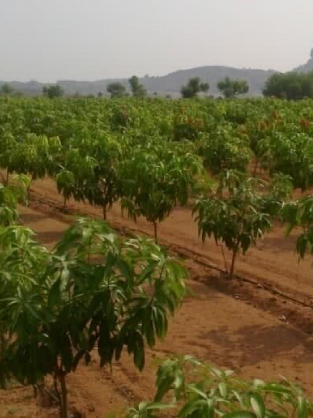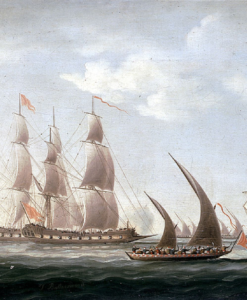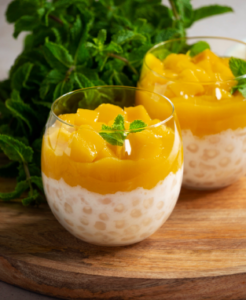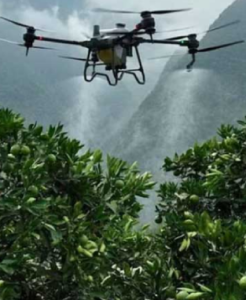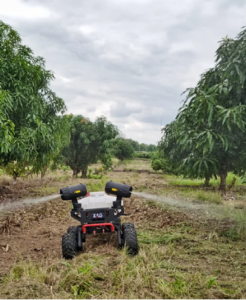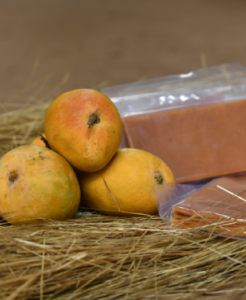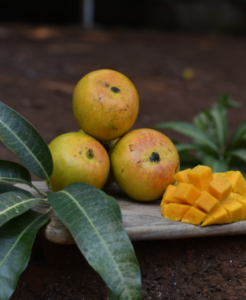Planting of fruit trees rather at a closer spacing than the recommended one using certain special techniques with the sole objective of obtaining maximum productivity per unit area without sacrificing quality is often referred as ‘High density planting’ or HDP. This technique was first established in apple in Europe during sixties and now majority of the apple orchards in Europe, America, Australia and New Zealand are grown under this system. In this system, four planting densities are recognized for apples viz., low HDP (< 250 trees/ha), moderate HDP (250-500 tree/ha), high HDP (500 to 1250 trees/ha) and ultra-high HDP (>1250 trees/ha).
Planting system has been also established in apple orchards with a plant population of 20,000 trees. Recently, super high density per ha. In some orchards, still closer, planting of apple trees is followed (say 70,000 trees/ha) which is often referred as ‘meadow orchards’.
Advantages of High-Density Planting
1. Best utilized of land and resources.
2. Increase in yield per unit area.
3. Quality production of fruit crops.
4. Easy for intercultural operation, plant protection and harvesting.
5. Low labour costs and better orchard management.
6. Higher harvest index as well as early economic returns.
Characteristics of HDP are:
1. The trees of HDP should have maximum number of fruiting branches and minimum number of structural branches.
2. The trees are generally trained with a central leader surrounded by nearly horizontal fruiting branches.
3. These branches should be so arranged and pruned in such a way that each branch casts minimum amount of shade on other branches.
4. The height should be one and half its diameter at the base. A key to successful HDP depends upon the control of tree size. This is achieved by,
a) Use of size controlling root stocks. In apple, dwarfing root stocks and intermediate stocks like M27, M9 and Ottawa-3 are used to control the size of the plant. In pears, Off – P 51 and Quince-C are commonly used as dwarfing root stocks.
b) Use of spur type scions In temperate fruit crops like apple, the cultivars can be classified into a spur type or non-spur type. The spur types which have restricted annual growth are alone suitable for HDP
c) Training and pruning methods to induce dwarfness- under Indian conditions, apple trees trained under spindle bush, dwarf pyramid, cordon systems are found to contain the growth of the trees appreciably for HDP systems.
d) Mechanical device and use of chemicals to control size Growth regulators such as daminozide, ethephon, chlormaquat and paclobutrazal are extensively used to reduce shoot growth by 30 to 40%. This results in increased flowering in the subsequent years and may be useful in encouraging earlier commercial fruit production in strongly vegetative fruitful young trees. Besides chemical manipulation, mechanical devices employing the use of spreaders and tying down the branches to make them grow from near horizontal to an angle of 45° from the main stem are also some of the standard practices to control tree size.
Planting system for HDP
The success of HDP depends upon the right choice of planting system. Generally, rectangular planting with single, double and three row plantings are followed.
In single row planting, the distance within the row is close, whereas the distance between the row is wide (4x 2m).
In double row planting, a wider spacing is given after every two rows (4+ 2x 2m) whereas in three row planting, a wider spacing is given after every three rows (4+2 X 2X 2m).
In meadow orchard system, a bed of 10 to 15 rows is closely planted and separated by alleys of 2.5m width between beds. This system is also called bed system.
High Density Planting in Alphonso Mango
• An important approach for improving productivity; high economic returns per unit area.
• System permits maximum utilization of land, water, nutrients and solar energy.
• Conventionally, mango is planted at 10 x 10m (100 trees/hectare); high density planting (HDP) can accommodate 400 trees per hectare (5 × 5m).
• Canopy management involving training and pruning are essential aspects right from alphonso mango orchard establishment; these need to continue throughout the life of orchard.
• With integration of fertigation technology, productivity as high as 14-15 tons could be achieved as against 7-8 tonnes under conventional system.
• Fruit drop is minimum (4.2 %) under HDP.
• Pests and diseases management is crucial.

